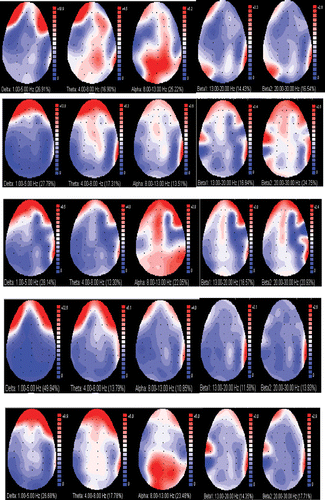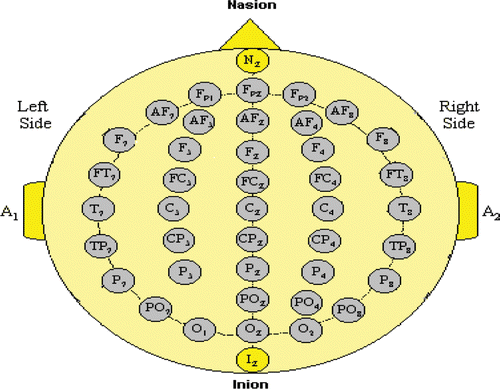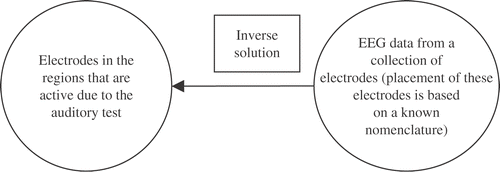Figures & data
Figure 1. ESI-256 system components: (a) ESI-256 system (eight SynAmp amplifiers, host computer, and display monitor), (b) eight head boxes (pre-amplifiers).
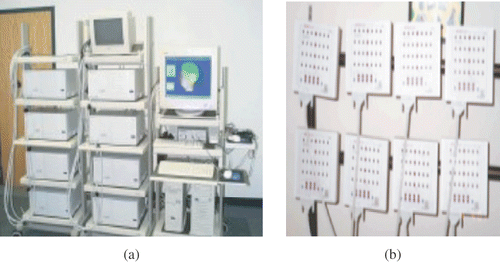
Table 1. Standard region definitions and corresponding electrodes
Figure 8. Centroids of activity of the right and left hemispheres for all patients in terms of auditory (left) vs. response (right) phases.

Figure 9. Illustrative frequency activities in five subjects during auditory/comprehension task. Black corresponds to red as mentioned in the text, and dark gray corresponds to blue. (Colour version available online.)
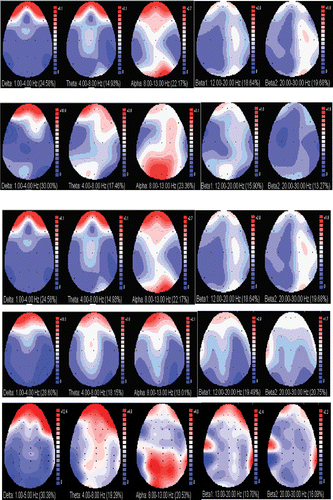
Figure 10. Illustrative frequency activities in five subjects during answer task. Black corresponds to red as mentioned in the text, and dark gray corresponds to blue. (Colour version available online.)
